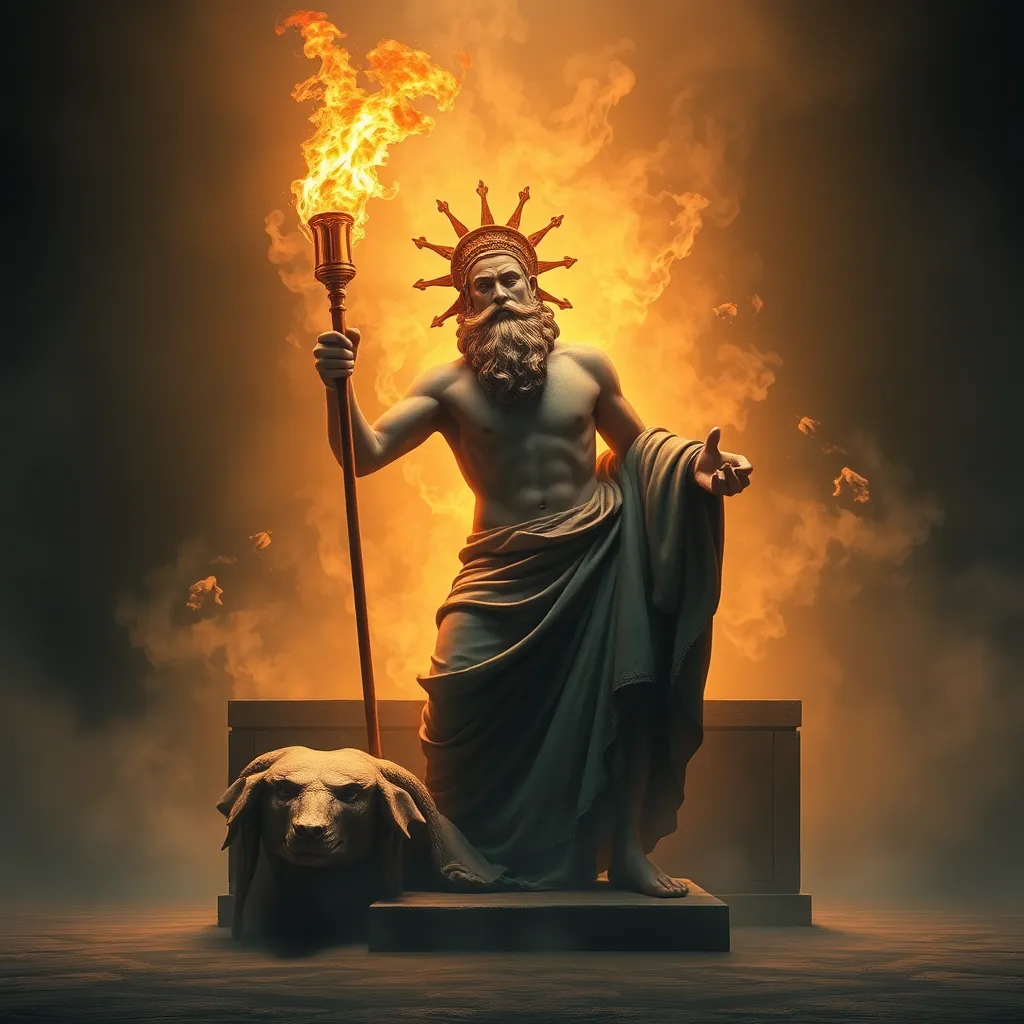Hephaestus and the Concept of Divine Inspiration in Art
I. Introduction
Hephaestus, the god of fire and craftsmanship, holds a unique position in Greek mythology as the divine artisan who created numerous remarkable works of art. Representing the essence of creativity and skill, Hephaestus personifies the relationship between divinity and artistic inspiration. This article explores the multifaceted connection between Hephaestus and artistic creation, delving into how divine inspiration influences artists and their works.
II. Hephaestus: The God of Fire and Craftsmanship
Hephaestus is one of the Twelve Olympian gods, known for his exceptional skills in metalworking and craftsmanship. According to myth, he was born to Hera, who cast him from Mount Olympus due to his physical deformities. Despite his challenges, Hephaestus became the master craftsman of the gods, forging weapons and tools for both deities and heroes alike.
- Mythological Background: Hephaestus is often depicted as a blacksmith, working at his forge under the volcano of Mount Etna. His creations include the iconic shield of Achilles, the armor of Hercules, and the exquisite throne for Hera.
- Role Among the Olympian Gods: While often overlooked by other gods, Hephaestus plays a crucial role in maintaining the balance of power among the deities, providing them with the means to defend themselves.
- Symbolism of Fire and Craftsmanship: Fire symbolizes transformation and creation, essential elements in artistic endeavors, where raw materials are shaped into beautiful forms.
III. The Nature of Divine Inspiration
The concept of divine inspiration in art is deeply rooted in history, where artists and craftsmen often sought the favor of the gods to enhance their creative processes. This divine influence can be observed in various cultures, where deities were believed to directly inspire and guide artists.
- Historical Perspectives: In ancient Greece, it was common for artists to invoke the muses or specific gods like Hephaestus for inspiration, highlighting the belief that creativity was a gift from the divine.
- Connection Between Deities and Artistic Process: Artists viewed their work as a form of communion with the gods, where success and innovation were attributed to divine favor.
- Manifestation of Divine Influence: This influence can manifest as sudden bursts of creativity, unique ideas, or the ability to overcome obstacles in the artistic process.
IV. Hephaestus as a Symbol of Artistic Struggle
Hephaestus embodies the duality of beauty and imperfection inherent in the artistic journey. His life story is a testament to the struggles that artists face, making him an enduring symbol of perseverance and innovation.
- Beauty and Imperfections: Just as Hephaestus created masterpieces despite his physical flaws, artists often grapple with their limitations, transforming struggles into profound works of art.
- Physical Disabilities: Hephaestus’ lameness serves as a metaphor for the challenges artists encounter, reinforcing the idea that greatness can emerge from adversity.
- Narrative of Perseverance: His journey from rejection to becoming the divine craftsman illustrates the importance of resilience in the creative process.
V. Artistic Contributions Attributed to Hephaestus
Hephaestus is credited with numerous artistic contributions that have left a lasting impact on both mythology and art history. His creations reflect not only technical proficiency but also a deep understanding of aesthetics.
- Overview of Works: Hephaestus is associated with various legendary artifacts, such as:
- The Shield of Achilles
- The Golden Fleece
- The Automata, or self-operating machines
- Aesthetic Qualities: His works are characterized by intricate designs, functionality, and the ability to convey profound narratives, embodying the union of form and purpose.
- Influence on Artistic Movements: Hephaestus’ legacy continues to inspire various artistic movements, from Renaissance art to contemporary sculpture, showcasing the timeless appeal of craftsmanship.
VI. The Relationship Between Hephaestus and Other Deities
The interactions between Hephaestus and other Olympian gods enrich the narrative of divine inspiration, illustrating the collaborative nature of creativity.
- Interactions with Athena: Athena, the goddess of wisdom, often collaborated with Hephaestus, symbolizing the harmony between intellect and craftsmanship in art.
- Rivalry with Apollo: The contrast between Hephaestus’ practical skills and Apollo’s emphasis on beauty and reason reflects the balance necessary in the artistic process.
- Collaborative Inspiration: These divine interactions highlight the multifaceted nature of creativity, where gods inspire and challenge each other, leading to greater artistic achievements.
VII. Modern Interpretations of Hephaestus and Divine Inspiration
Hephaestus continues to resonate in modern art and literature, serving as a symbol for contemporary artists seeking inspiration from mythology.
- Hephaestus in Contemporary Art: Artists today draw from his narrative, exploring themes of struggle, innovation, and the relationship between craftsmanship and technology.
- Relevance of Divine Inspiration: The concept remains significant, as many contemporary creators still seek inspiration beyond themselves, viewing their work as a dialogue with the divine.
- Case Studies: Numerous modern artists, such as sculptors and metalworkers, have invoked Hephaestus’ spirit in their creations, blending traditional techniques with contemporary themes.
VIII. Conclusion
Hephaestus stands as a monumental figure in the realm of art, symbolizing the profound connection between divinity and creativity. His legacy continues to inspire artists, reminding them of the importance of perseverance and the transformative power of inspiration. The ongoing dialogue between the divine and the artistic process remains vital, ensuring that Hephaestus’ influence endures in the creative endeavors of today’s artists.




